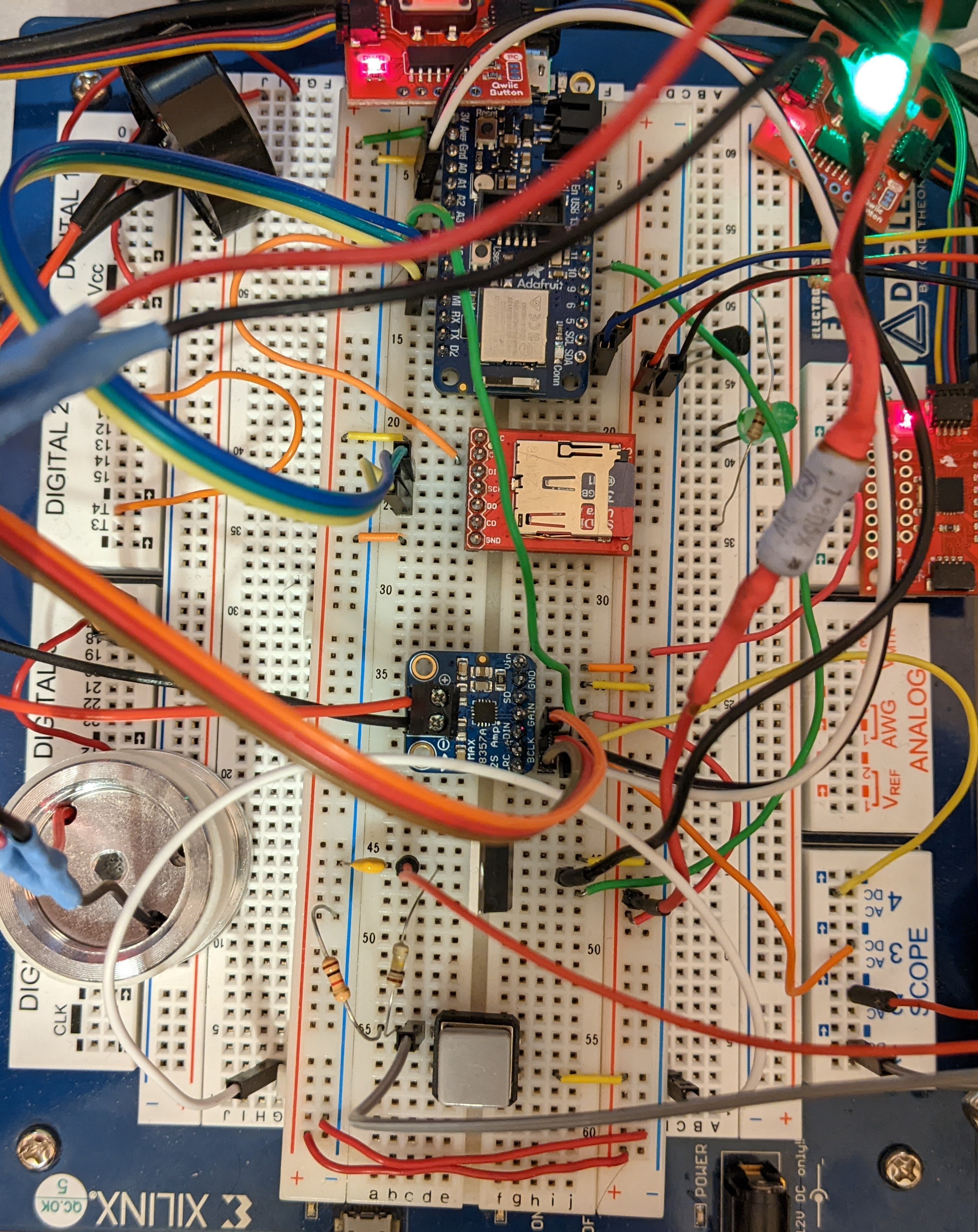Every project has to start somewhere. For most electronics projects, this "starting point" is the breadboard. The lightsaber is no exception:

For those that are wondering what they're looking at, it's mostly a rat's nest that you're looking at. Here's a quick tour:
- The two red boards at the very top are Sparkfun QWIIC buttons. They both turn the saber on and off, but there's more interesting things you can do with a second button.
- The black blob at the top-left is a crappy speaker.
- The blue board at middle-top is a Feather board, the microcontroller doing everything.
- The micro SD Card socket is a level-shifting breakout board from Sparkfun.
- The LED to the right of the micro SD card is not connected.
- The blue resistor to the right of the SD Card is the current limiter for the LED module (lower left).
- The red board to the right of the resistor is the IMU (connected, not used).
- The blue board below the micro SD card is an Adafruit I2S amplifier. I2S means the microcontroller doesn't have to generate a precisely-timed analog signal, just a stream of numbers over a serial interface.
- The blue Xilinx board is a PC-based anlog lab from Digilent. It's just there because i didn't want to disassemble the circuit just yet.
A quick description of some features:
- It lights up and makes noise
- The buttons are fixed-color, but they do fade/breathe while the saber is "sleeping"
- The buttons are simple on/off toggles (with momentary switches!)
- There's very simple turning on/turning off animations & sounds
- Sounds are stored on the micro SD card
- The IMU is currently unused
- BLE is implemented. You can change some brightnesses and volumes
- The phone app needed to do this doesn't yet exist.
....And that's just about it. Right around MVP territory, although I bet some would insist that SmoothSwing is a day-one must-have. There is logic in that viewpoint, but it didn't make the cut this time.
My perception is that SmoothSwing is well-documented, and it'll work wherever. BLE has neither of those advantages, and is rather dependent on platform support on mutliple platforms (firmware, phone, and the two put together). So, in my estimation, BLE is a much more important MVP feature than SmoothSwing. All that said, SmoothSwing is a critical feature, and I absolutely need to do it before a can make a demo saber to hand to strangers.
Next pass is to cram all this into a hilt so that I can iterate on a functioning saber and get a feel for what it's like to use.
 minifig404
minifig404
Discussions
Become a Hackaday.io Member
Create an account to leave a comment. Already have an account? Log In.